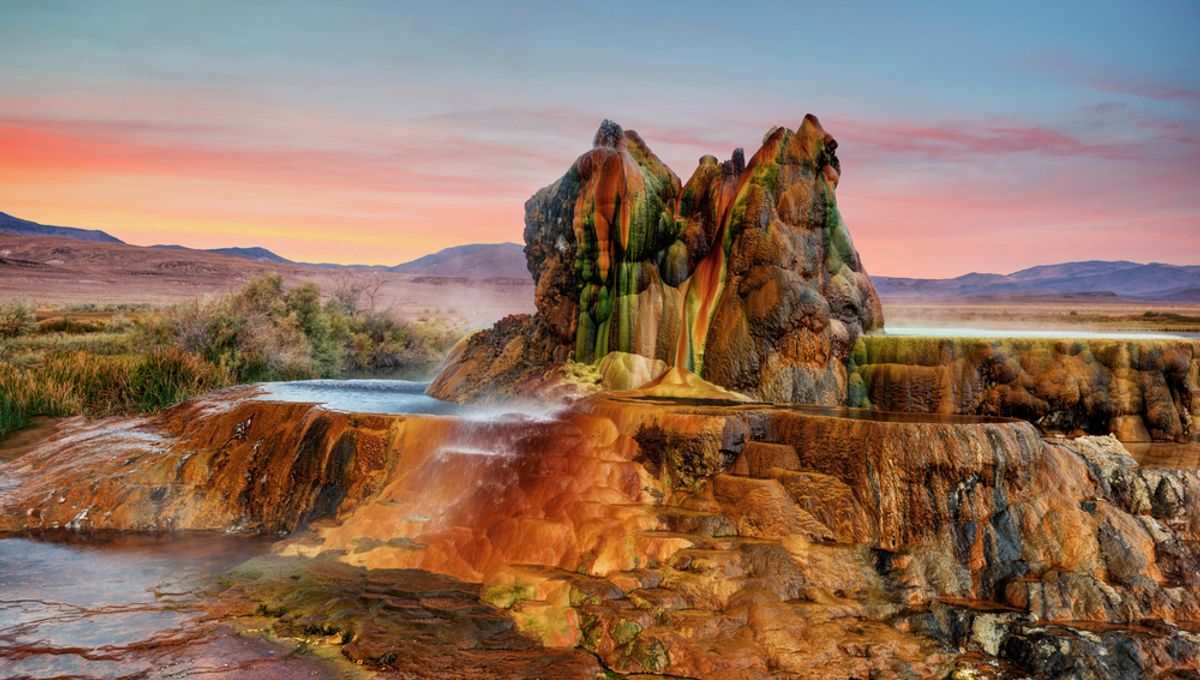
This article first appeared in Issue 12 of our free digital magazine CURIOUS.
Geology and biology collide at Fly Ranch Geyser in Nevada, USA, where a human-made well provides a window into Earth’s hottest watery environments and the curious life they support. Few animals would be lining up to take up residence in a place that reaches temperatures of 93°C (199°F), but a group of extremophile tenants is in part to thank for the magnificent view at Fly Ranch Geyser.
The other-worldly environment sits on the edge of Black Rock Desert. Settlers trying to establish a ranch in the region were likely unaware of the searing power of Nevada’s Hualapai Geothermal Flats when they began digging here over 100 years ago. To make the land suitable for ranching they carved out a well but ended up with an explosive source of boiling water that was useless for what they needed. This geyser would be the first of three brought on by human interference with the land, and it was known as The Wizard.
The region was drilled in the 1960s as a means of generating geothermal energy, but the additional human-made geyser turned out not to be hot enough to be of use. This well was sealed, but it didn’t hold, and the disturbance led to the development of a third, massive geyser a few hundred feet away. The second is known as Fly Geyser, and the third is called Will’s Geyser.
Subscribe to our newsletter and get every issue of CURIOUS delivered to your inbox free each month.
Geothermal waters are a force to be reckoned with, and the pressure meant the geysers kept growing year-on-year as boiling water burst out the top, replenishing layers of accumulating minerals and supporting a rich biome of colorful algae growing on the terraces.
The ever-growing cones now sport shades of red, green, and orange, as the result of thermophilic algae and mineral deposits. The minerals are picked up as the hot water surges through cracks in the rock, dissolving it as it moves. They then precipitate when they meet cooler temperatures on their escape from the geyser, building up in layers.
It might not sound homey but there are a variety of thermophilic bacteria, archaea, and algae that have set up a home in this extreme environment. They’re known as extremophiles for their tolerance and are popular subjects in scientific studies looking to understand how life might respond to a warming world.
As well as being a site of scientific significance, Fly Ranch Geyser is a popular tourist destination having been purchased by the non-profit Burning Man Project.
CURIOUS magazine is a digital magazine from IFLScience featuring interviews, experts, deep dives, fun facts, news, book excerpts, and much more. Issue 15 is out now.
Source Link: Steamy Stuff At Fly Ranch Geyser